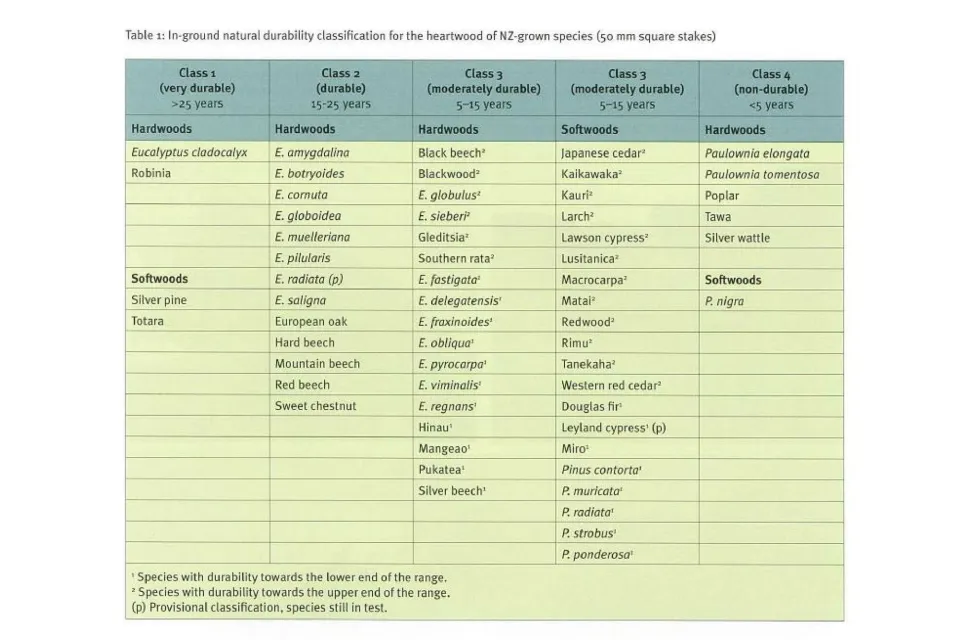-
About
-
Products
- By Timber Product
- Cladding
- Decking
- Joinery
- Screening
- Panelling
- View all
- By Application
- Exterior Cladding / Siding
- Exterior Rain Screen
- Exterior Roofing
- Interior Walls & Ceilings
- Soffits
- Screening, Fins & Battens
- Windows, Doors & Joinery
- Posts & Beams
- Accessories + Samples
- Coatings
- Fixings
- Samples
-
Shop
- Samples
- Timber Samples
- Architectural Sample Box
- View all
- Accessories
- Coatings
- Fixings
- View all
-
Resources
- By Resource Type
- Technical Data Sheets
- Guides & Manuals
- Technical Articles
- Profile Drawings
- View all
- How To
- How To Specify
- How To Install
- How To Maintain
- Projects
- Contact
Heartwood of Naturally Durable Species
Data collected over many years from sites throughout New Zealand has been used to classify the durability of timber from locally grown species.
Durability classifications are generally based on in-ground tests of small stakes. The suitability of individual species for a range of end uses has been measured using a combination of field and 'in-service' tests around the country. Such data supports the use of naturally durable species as an alternative to preservative treated radiata pine.
While the in-ground durability classification provides a useful guide, for above-ground uses other factors such as surface coatings, orientation and exposure to rainfall have a major influence on the durability of timber components in above-ground situations.
Timber from naturally durable species typically exhibits more variable resistance to decay organisms than that from radiata pine treated commercially with chemical preservatives.
Locally grown timbers may not necessarily compare in durability to imported species.
It is important to note that the heartwood of timber is typically more durable than the sapwood. Depending on the species, sapwood is a band of wood on the outside of the log.
All untreated sapwood has poor resistance to biological attack from wood destroying fungi. Individual species' decay resistance is determined largely by the extractives formed when sapwood changes into heartwood.
Termites and marine borers are less easily deterred by these extractives than fungi and will attack most species, though slowly in the case of the very durable species.
Careful selection of New Zealand grown heartwood timbers is an excellent way to minimise the use of timber preservative chemicals, and make for a natural, healthy home.
An example is the use of Douglas fir heartwood in Abodo’s Tundra Cladding range of weatherboards.
Data is available on the various local timbers and their durability. In 2014 David Page and Tripti Singh published an article on New Zealand Species with reference to the natural durability of timber standard, AS 5604.

